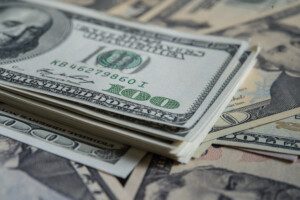It’s so wonderful and outright cool when an autistic person has figured out a way to make money off of a special interest (aka obsession or hyperfixation)!
A very common theme in Autism Spectrum Disorder is the so-called special interest.
This refers to an obsession, hyperfixation or unusually keen interest in a topic that may be very odd or esoteric, as well as more popular and broad such as drone science.
Broader topics give more rise to the possibility of making money off that passion — as the following autistic people have done with their special interests.
Autistic People Who’ve Made Money with Their Special Interests
Tony Rodriguez, Registered Piano Technician
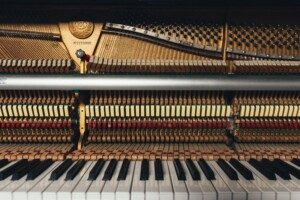
Markus Gjengaar/Unsplash
Tony Rodriguez, diagnosed with autism in early childhood, owns and operates Tuning by Tony, based in Grand Rapids, MI.
He tunes, services, repairs and restores all major brands of pianos.
Tony’s fascination with the innards of pianos began at age 10 when he started taking piano lessons.
“My piano teacher was frustrated with me because I was more interested in pulling the piano panel open to see how the action rack was working,” he says.
“One day a piano tuner came to our home. I was watching. The tuner noticed my interest and gave me an old electronic tuning instrument. That is when I started tuning pianos as a hobby.”
Throughout childhood, whenever Tony saw a piano, he wanted to look inside.
In 2010, Tony graduated from a piano technology school. A registered piano technician, he continues studying piano technology at the Reeder Piano Restoration Center and is a member of the National Piano Technicians Guild.
“I expect to actively enrich my skill in piano technology for the rest of my life,” says Tony.
Brian Penny, Generative AI Art Creator

Brian Penny/Unsplash
Generative AI (artificial intelligence) is a branch of computer science that creates content including imagery, such as the one above – created by Brian Penny, 42, who was diagnosed with autism in his teens.
In 2022 he discovered generative AI images and explains, “I heard of Dalle2 all year, and in August got access to Midjourney.
“From there, I spent 30 days generating images nonstop almost 24/7 to make the most of my unlimited subscription.
“By the end of the month, I had about 2,000 images I had no idea what to do with besides share on social media in the moment.
“Then I realized I needed to monetize this in order to continue using it on the same level.
“So I figured out the best way to monetize a large archive of images is by mass uploading them to stock images sites.”
Brian has between 1,000-3,000 images uploaded to major stock sites such as Unsplash, Pixabay. Pexels, Alamy and Adobe.
“I do not do any marketing. I do not sell to my friends and family. I do not have to be a popular influencer or pretend to be somebody fake on videos or social audio.
“I just enter prompts as fast as it will let me and upload them as fast as I can input keywords to describe them.
“The more images you make covering more keywords, the better you will do. I have talked to many others trying to follow my lead who cannot keep up with my pace.
“They cannot make images nor input images fast enough. They get exhausted while I enter a Jedi-like state of bliss because I am simply following timers for the image generation, upload and approval processes.
“I started in September and in nearly four months have earned over $1,200.
“It is all due to my ability to bulk-generate quality images and upload them to stock image sites at a marathoner’s pace that nobody else can match because they cannot hyperfixate on what is important like I can.
“I think AI will be instrumental in autistic people succeeding in business.”
Ashley Gartner, Master Esthetician and Blogger

Shutterstock/Image Point Fr
“When I was twelve I developed acne,” begins Ashley, 24, diagnosed with ASD at 24.
“I would go to dermatologists and try all sorts of products and prescriptions they gave me with no luck.
“Everything dermatologists gave me or did to my skin only made it worse, so I became determined to figure out how to achieve clear skin by myself. This began my special interest in skincare.
“I was constantly doing research on all things related to skincare. I realized that although I wanted to clear my skin, I also really enjoyed learning about skin and all the different products that were out there.
“I loved to experiment with all sorts of skincare tools and products. It made me so happy to buy skincare products, watch YouTube videos and read articles on all sorts of skincare topics. I couldn’t get enough.
“While in esthetics school, I got a job at a local spa called Sesen Spa.”
Ashley eventually became a licensed master esthetician.
“I’m very grateful to my manager and that I was able to work there as my first esthetician job,” continues Ashley. “I worked there for a year and then moved to Florida.”
After two months of employment in Florida as an esthetician, Ashley disclosed her autism diagnosis to her manager.
“They then hired another esthetician, got them trained and in the books, and fired me over the phone on my day off.
“This was gut wrenching and I was sick to my stomach for a month after this.
“I had always been a very hard worker and been praised by all my past employers for the good work that I do.
“I had already started my blog before I got fired, but this was my chance to go all in — now that I did not have a job.
“I was determined to make blogging my new career, and when autistic people set their mind to do something, they do it.
“I hope my blog can be a place where people find answers to what they are searching for and that they are able to feel good in the skin they’re in. We all deserve healthy skin and it is achievable!”
Lorra Garrick, Content Creator
That’s me, the author of this article. I’ve had a little obsession going with the correct use of a treadmill.

Julia Larson/Pexels
I’d always thought this was simply an extension of my lifelong passion for exercise and fitness.
Once I received my late diagnosis of Autism Spectrum Disorder, I realized that my “pet peeve” had actually been a special interest.
For instance, I’d hope that strangers in gym locker rooms would start small talk, as this would be a gateway for me to then ask, “By the way, do you use a treadmill?”
I’d also initiate small talk — for the sole purpose of having a gateway to eventually asking if they used a treadmill.
If they answered yes, I’d then ask if they held onto the machine.
If they said yes, I’d launch into a mini-dissertation about all the reasons (and there are many!) this is wrong for able-bodied people. I never tired of this. I could go on and on.
Every time I was in a gym (I belong to a chain), I HAD to approach at least one person who was holding onto a treadmill and begin my lecture after sizing them up first with friendly eye contact to see if they’d be receptive.
I’ve lost count over how many women and men I had approached this way – and this was BEFORE I became a personal trainer!
I’d info-dump to my father — who never used a treadmill — about the “grippers” at the gym.
I’ve written articles about the many reasons one should not hold onto a treadmill for numerous print magazines.
This site alone contains 66 articles authored by me, specifically dedicated to analysis of holding onto a treadmill, covering every possible permutation of use (e.g., 15 percent incline at 2 mph; holding on with one hand; holding on while running; holding on while walking sideways; holding onto the front bar; holding onto the side rails; holding on if you’re a beginner; why holding on is bad for the spine; why it’s bad for the shoulders; how to break the habit; people over 55; men over 65…).
An additional 15 posts here cover this topic but it’s not the main topic of those articles.
More Autistic People Who’ve Made Money with a Special Interest
I will be adding more stories about autistic people who’ve monetized their special interests, so keep this page bookmarked!
You may be wondering what the difference is between a special interest in autism and a strong passion by a neurotypical individual.
Here’s the difference between an autistic special interest and a neurotypical hobby.
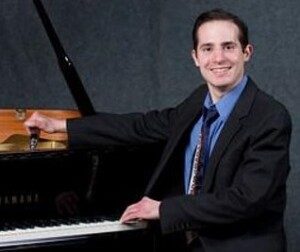 Tuning by Tony is a piano tuning and repair service owned and operated by Tony Rodriguez. His attention to details, passion for pianos and commitment to continued professional training make the difference. His specialties include tuning and pitch adjustment, and general action and string repairs of all piano styles.
Tuning by Tony is a piano tuning and repair service owned and operated by Tony Rodriguez. His attention to details, passion for pianos and commitment to continued professional training make the difference. His specialties include tuning and pitch adjustment, and general action and string repairs of all piano styles.
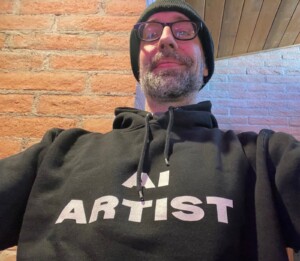 Brian Penny a media strategist and writer navigating the creator economy with AI.
Brian Penny a media strategist and writer navigating the creator economy with AI.
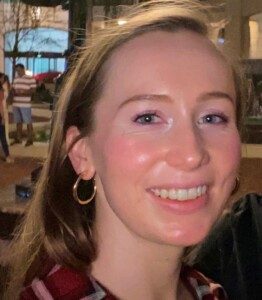 Ashley Gartner runs Ash Esthetics, a holistic skincare site where she shares her expertise in skincare, a passion she’s had since age 12. “I was determined to learn everything there is to know about skin,” says Ashley, who’s licensed as a master esthetician. “My main goal is to just help people because I know how hard it is to have healthy skin.”
Ashley Gartner runs Ash Esthetics, a holistic skincare site where she shares her expertise in skincare, a passion she’s had since age 12. “I was determined to learn everything there is to know about skin,” says Ashley, who’s licensed as a master esthetician. “My main goal is to just help people because I know how hard it is to have healthy skin.”
 Lorra Garrick has been covering medical and fitness topics for many years, having written thousands of articles for print magazines and websites, including as a ghostwriter. She’s also a former ACE-certified personal trainer. In 2022 she received a diagnosis of Level 1 Autism Spectrum Disorder.
Lorra Garrick has been covering medical and fitness topics for many years, having written thousands of articles for print magazines and websites, including as a ghostwriter. She’s also a former ACE-certified personal trainer. In 2022 she received a diagnosis of Level 1 Autism Spectrum Disorder.
.

